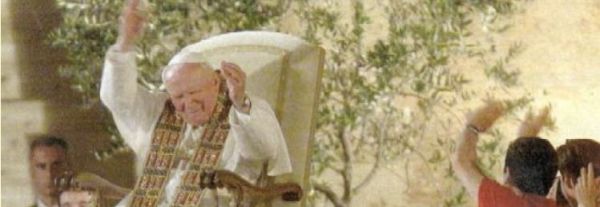The mystery of the Transfiguration takes place at a very precise moment in Christ's preaching of his mission, when he begins to confide to his disciples that he must "go up to Jerusalem and suffer much ... and be killed and rise again on the third day" (Mt 16:21). With reluctance they accept the first announcement of the passion and the divine Master, before repeating and confirming it, wants to give them proof of his total rootedness in the will of the Father so that before the scandal of the cross they will not succumb. The passion and death will in fact be the way by which the heavenly Father will lead "the beloved Son", raised from the dead, to glory. This will henceforth also be the way of his disciples. No one will come to the light except through the cross, symbol of the sufferings that afflict human existence. The cross is thus transformed into an instrument of atonement for the sins of all humanity. United with his Lord in love, the disciple participates in his redemptive passion.
[Pope John Paul II, homily 7 March 1993]












